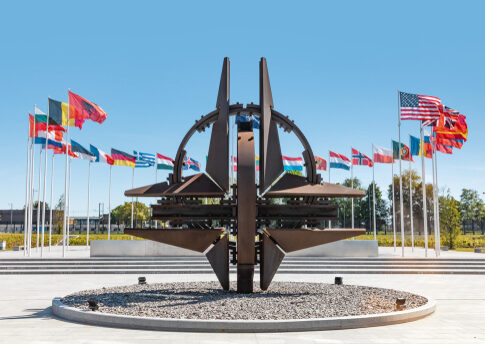*As the war in Urine continues, France is gearing up for its military presence on NATO’s eastern front. This is to signal a strengthened presence against Russian aggression and demonstrate its capabilities. NATO lays the foundation for its “back to the future” approach.
France’s Military Transformation
In a significant move to bolster NATO’s eastern defenses, French soldiers are set to participate in a large-scale military exercise in Romania called Dacian Spring 2025. This will allow France to have the necessary build-up in place in a 10-day window
General Bertrand Toujouse, head of the army’s land command for Europe, emphasized the seriousness of the situation, stating, “We used to play war. Now there’s a designated enemy, and we train with people with whom we’d go to war.” This stark reminder underscores the shift in NATO’s strategic focus following Russia’s invasion of Ukraine in 2022.
Paris Preps For WWIII: 1000s Of French Soldiers To Arrive In Romania For Simulated Combat With Russia https://t.co/tjIYiRtYA5
— zerohedge (@zerohedge) October 9, 2024
NATO’s Strategic Shift
After Russia invaded Ukraine, the dynamics between Russia and NATO drastically altered. Change its existing plans and update the command structure. This place is referred to as the “back to the future” way of thinking that prompted NATO to adapt to potential conflict with Russia.
“NATO members can and should do more to ensure it can continue to deter Russia from attacking the Alliance under the cover of nuclear threats or even use of nuclear weapons.”
This strategic shift includes the implementation of eight Enhanced Forward Presence (EFP) missions and the development of the New NATO Force Model (NFM), which aims to provide a larger pool of forces for rapid deployment. These initiatives are part of NATO’s broader effort to strengthen its deterrence and defense capabilities in the face of increasing Russian aggression.
France will strengthen Ukraine's capabilities in the production of weapons systems, said the Minister of Foreign Affairs of France, Stephane Sejournay
"We see how the Russian Federation is hitting civilian infrastructure and houses in violation of all provisions of international… pic.twitter.com/dxFG8cFO8l
— Jürgen Nauditt 🇩🇪🇺🇦 (@jurgen_nauditt) January 13, 2024
Challenges and Opportunities
Despite significant progress in defense spending, forward defense, and high-readiness forces, NATO faces several challenges. One key issue is the lack of a “military Schengen” for seamless movement of troops and equipment across Europe. General Pierre-Eric Guillot highlighted this concern, stating, “There is still no military Schengen, and we need to decisively improve military mobility in Europe.”
Additionally, the speed of Russian military reconstitution has been faster than expected, with potential peak readiness around 2025-26. This rapid recovery poses a significant risk to NATO and underscores the urgency of the alliance’s rearmament efforts.
Nuclear Deterrence and Future Outlook
As Russia expands its nuclear capabilities and increases the frequency of nuclear exercises, NATO must enhance its nuclear deterrence strategy. While the U.S., UK, and France provide a foundation for NATO’s nuclear deterrence, there is a growing consensus that other allies should contribute more to ensure a robust and credible deterrent.
Looking ahead, NATO’s ability to synchronize efforts with the European Union and strengthen its defense industry will be crucial for maintaining a strong deterrence posture. As the alliance continues to adapt to the evolving security landscape, exercises like Dacian Spring 2025 will play a vital role in demonstrating NATO’s readiness and resolve in the face of potential threats.
Sources:


